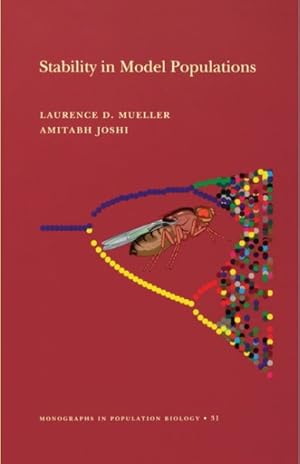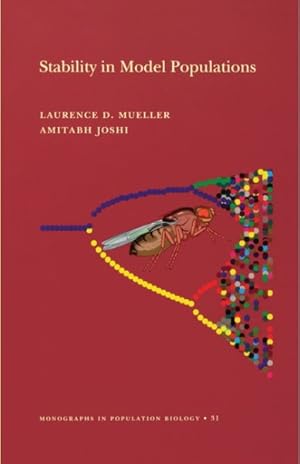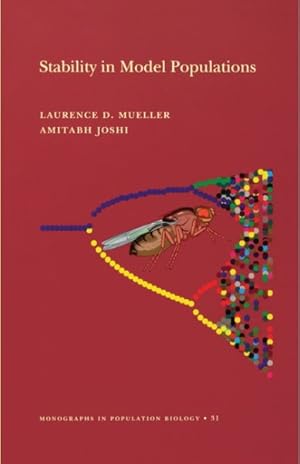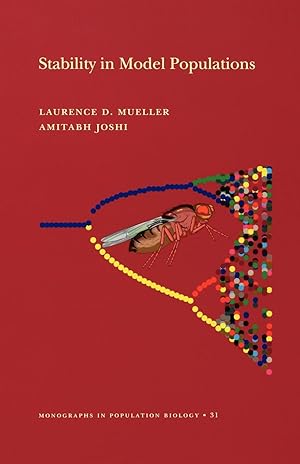mueller laurence d joshi amitabh (16 risultati)
Filtri di ricerca
Tipo di articolo
- Tutti i tipi di prodotto
- Libri (16)
- Riviste e Giornali (Nessun altro risultato corrispondente a questo perfezionamento)
- Fumetti (Nessun altro risultato corrispondente a questo perfezionamento)
- Spartiti (Nessun altro risultato corrispondente a questo perfezionamento)
- Arte, Stampe e Poster (Nessun altro risultato corrispondente a questo perfezionamento)
- Fotografie (Nessun altro risultato corrispondente a questo perfezionamento)
- Mappe (Nessun altro risultato corrispondente a questo perfezionamento)
- Manoscritti e Collezionismo cartaceo (Nessun altro risultato corrispondente a questo perfezionamento)
Condizioni Maggiori informazioni
- Nuovo (10)
- Come nuovo, Ottimo o Quasi ottimo (3)
- Molto buono o Buono (3)
- Discreto o Mediocre (Nessun altro risultato corrispondente a questo perfezionamento)
- Come descritto (Nessun altro risultato corrispondente a questo perfezionamento)
Legatura
Ulteriori caratteristiche
- Prima ed. (Nessun altro risultato corrispondente a questo perfezionamento)
- Copia autograf. (Nessun altro risultato corrispondente a questo perfezionamento)
- Sovracoperta (Nessun altro risultato corrispondente a questo perfezionamento)
- Con foto (7)
- Non Print on Demand (15)
Lingua (1)
Spedizione gratuita
Paese del venditore
Valutazione venditore
-
Stability in Model Populations
Editore: Princeton University Press, 2000
ISBN 10: 0691007330 ISBN 13: 9780691007335
Lingua: Inglese
Da: ThriftBooks-Atlanta, AUSTELL, GA, U.S.A.
EUR 14,07
Convertire valutaGratis per la spedizione in U.S.A.Quantità: 1 disponibili
Aggiungi al carrelloPaperback. Condizione: Good. No Jacket. Pages can have notes/highlighting. Spine may show signs of wear. ~ ThriftBooks: Read More, Spend Less.
-
Stability in Model Populations
Editore: Princeton University Press, 2000
ISBN 10: 0691007330 ISBN 13: 9780691007335
Lingua: Inglese
Da: Better World Books, Mishawaka, IN, U.S.A.
EUR 14,09
Convertire valutaGratis per la spedizione in U.S.A.Quantità: 2 disponibili
Aggiungi al carrelloCondizione: Very Good. Former library book; may include library markings. Used book that is in excellent condition. May show signs of wear or have minor defects.
-
Stability in Model Populations
Editore: Princeton University Press, 2000
ISBN 10: 0691007330 ISBN 13: 9780691007335
Lingua: Inglese
Da: Better World Books, Mishawaka, IN, U.S.A.
EUR 14,09
Convertire valutaGratis per la spedizione in U.S.A.Quantità: 1 disponibili
Aggiungi al carrelloCondizione: Very Good. Used book that is in excellent condition. May show signs of wear or have minor defects.
-
Stability in Model Populations (Mpb-31)
Editore: Princeton University Press, 2000
ISBN 10: 0691007330 ISBN 13: 9780691007335
Lingua: Inglese
Da: Books Puddle, New York, NY, U.S.A.
EUR 44,94
Convertire valutaEUR 3,41 per la spedizione in U.S.A.Quantità: 1 disponibili
Aggiungi al carrelloCondizione: New. pp. 332.
-
Stability in Model Populations (Mpb-31)
Editore: Princeton University Press, 2000
ISBN 10: 0691007330 ISBN 13: 9780691007335
Lingua: Inglese
Da: Majestic Books, Hounslow, Regno Unito
EUR 44,43
Convertire valutaEUR 7,47 per la spedizione da Regno Unito a U.S.A.Quantità: 1 disponibili
Aggiungi al carrelloCondizione: New. pp. 332 22:B&W 5.5 x 8.5 in or 216 x 140 mm (Demy 8vo) Perfect Bound on White w/Gloss Lam.
-
Stability in Model Populations
Editore: Princeton University Press, 2000
ISBN 10: 0691007322 ISBN 13: 9780691007328
Lingua: Inglese
Da: Ammareal, Morangis, Francia
EUR 29,99
Convertire valutaEUR 22,50 per la spedizione da Francia a U.S.A.Quantità: 1 disponibili
Aggiungi al carrelloHardcover. Condizione: Très bon. Ancien livre de bibliothèque. Couverture différente. Edition 2000. Ammareal reverse jusqu'à 15% du prix net de cet article à des organisations caritatives. ENGLISH DESCRIPTION Book Condition: Used, Very good. Former library book. Different cover. Edition 2000. Ammareal gives back up to 15% of this item's net price to charity organizations.
-
Stability in Model Populations
Editore: Princeton University Press, 2000
ISBN 10: 0691007322 ISBN 13: 9780691007328
Lingua: Inglese
Da: Labyrinth Books, Princeton, NJ, U.S.A.
EUR 63,37
Convertire valutaEUR 3,85 per la spedizione in U.S.A.Quantità: 5 disponibili
Aggiungi al carrelloCondizione: New.
-
Stability in Model Populations
Editore: Princeton University Press, 2000
ISBN 10: 0691007330 ISBN 13: 9780691007335
Lingua: Inglese
Da: BennettBooksLtd, San Diego, NV, U.S.A.
EUR 77,81
Convertire valutaEUR 5,94 per la spedizione in U.S.A.Quantità: 1 disponibili
Aggiungi al carrellopaperback. Condizione: New. In shrink wrap. Looks like an interesting title!
-
Stability in Model Populations
Editore: Princeton University Press, 2000
ISBN 10: 0691007330 ISBN 13: 9780691007335
Lingua: Inglese
Da: GreatBookPrices, Columbia, MD, U.S.A.
EUR 98,62
Convertire valutaEUR 2,26 per la spedizione in U.S.A.Quantità: 1 disponibili
Aggiungi al carrelloCondizione: As New. Unread book in perfect condition.
-
Stability in Model Populations
Editore: Princeton University Press, 2000
ISBN 10: 0691007330 ISBN 13: 9780691007335
Lingua: Inglese
Da: GreatBookPrices, Columbia, MD, U.S.A.
EUR 103,50
Convertire valutaEUR 2,26 per la spedizione in U.S.A.Quantità: 1 disponibili
Aggiungi al carrelloCondizione: New.
-
Stability in Model Populations
Editore: Princeton University Press, US, 2000
ISBN 10: 0691007330 ISBN 13: 9780691007335
Lingua: Inglese
Da: Rarewaves USA, OSWEGO, IL, U.S.A.
EUR 113,46
Convertire valutaGratis per la spedizione in U.S.A.Quantità: Più di 20 disponibili
Aggiungi al carrelloPaperback. Condizione: New. Throughout the twentieth century, biologists investigated the mechanisms that stabilize biological populations, populations which--if unchecked by such agencies as competition and predation--should grow geometrically. How is order in nature maintained in the face of the seemingly disorderly struggle for existence? In this book, Laurence Mueller and Amitabh Joshi examine current theories of population stability and show how recent laboratory research on model populations--particularly blowflies, Tribolium, and Drosophila--contributes to our understanding of population dynamics and the evolution of stability. The authors review the general theory of population stability and critically analyze techniques for inferring whether a given population is in balance or not. They then show how rigorous empirical research can reveal both the proximal causes of stability (how populations are regulated and maintained at an equilibrium, including the relative roles of biotic and abiotic factors) and its ultimate, mostly evolutionary causes.In the process, they describe experimental studies on model systems that address the effects of age-structure, inbreeding, resource levels, and population structure on the stability and persistence of populations. The discussion incorporates the authors' own findings on the evolution of population stability in Drosophila. They go on to relate laboratory work to studies of animals in the wild and to develop a general framework for relating the life history and ecology of a species to its population dynamics. This accessible, finely written illustration of how carefully designed experiments can improve theory will have tremendous value for all ecologists and evolutionary biologists.
-
Stability in Model Populations
Editore: Princeton University Press, 2000
ISBN 10: 0691007330 ISBN 13: 9780691007335
Lingua: Inglese
Da: GreatBookPricesUK, Woodford Green, Regno Unito
EUR 104,46
Convertire valutaEUR 17,24 per la spedizione da Regno Unito a U.S.A.Quantità: 1 disponibili
Aggiungi al carrelloCondizione: As New. Unread book in perfect condition.
-
Stability in Model Populations
Editore: Princeton University Press, 2000
ISBN 10: 0691007330 ISBN 13: 9780691007335
Lingua: Inglese
Da: GreatBookPricesUK, Woodford Green, Regno Unito
EUR 116,82
Convertire valutaEUR 17,24 per la spedizione da Regno Unito a U.S.A.Quantità: 1 disponibili
Aggiungi al carrelloCondizione: New.
-
Stability in Model Populations
Editore: Princeton University Press, US, 2000
ISBN 10: 0691007330 ISBN 13: 9780691007335
Lingua: Inglese
Da: Rarewaves USA United, OSWEGO, IL, U.S.A.
EUR 116,84
Convertire valutaEUR 42,74 per la spedizione in U.S.A.Quantità: Più di 20 disponibili
Aggiungi al carrelloPaperback. Condizione: New. Throughout the twentieth century, biologists investigated the mechanisms that stabilize biological populations, populations which--if unchecked by such agencies as competition and predation--should grow geometrically. How is order in nature maintained in the face of the seemingly disorderly struggle for existence? In this book, Laurence Mueller and Amitabh Joshi examine current theories of population stability and show how recent laboratory research on model populations--particularly blowflies, Tribolium, and Drosophila--contributes to our understanding of population dynamics and the evolution of stability. The authors review the general theory of population stability and critically analyze techniques for inferring whether a given population is in balance or not. They then show how rigorous empirical research can reveal both the proximal causes of stability (how populations are regulated and maintained at an equilibrium, including the relative roles of biotic and abiotic factors) and its ultimate, mostly evolutionary causes.In the process, they describe experimental studies on model systems that address the effects of age-structure, inbreeding, resource levels, and population structure on the stability and persistence of populations. The discussion incorporates the authors' own findings on the evolution of population stability in Drosophila. They go on to relate laboratory work to studies of animals in the wild and to develop a general framework for relating the life history and ecology of a species to its population dynamics. This accessible, finely written illustration of how carefully designed experiments can improve theory will have tremendous value for all ecologists and evolutionary biologists.
-
EUR 151,48
Convertire valutaEUR 28,73 per la spedizione da Regno Unito a U.S.A.Quantità: 2 disponibili
Aggiungi al carrelloPaperback. Condizione: Brand New. 319 pages. 8.25x5.50x0.75 inches. In Stock.
-
Stability in Model Populations (MPB-31)
Editore: Princeton University Press, 2000
ISBN 10: 0691007330 ISBN 13: 9780691007335
Lingua: Inglese
Da: moluna, Greven, Germania
EUR 88,31
Convertire valutaEUR 48,99 per la spedizione da Germania a U.S.A.Quantità: Più di 20 disponibili
Aggiungi al carrelloCondizione: New. Dieser Artikel ist ein Print on Demand Artikel und wird nach Ihrer Bestellung fuer Sie gedruckt. Examines theories of population stability and shows how laboratory research on model populations - particularly blowflies, Tribolium, and Drosophila - contributes to our understanding of population dynamics and the evolution of stability. This book analyzes.










